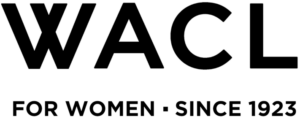
Achieving the blend through flexible working
Advice on the importance of flexibility from Tobi Asare, Author of ‘The Blend: How to Successfully Manage a Career and a Family‘
WACL is on a mission for 50% of leadership roles including CEO roles to be held by a woman, and it is a mission I can fully get behind. Since 2018 I have been on my own personal endeavours to help women smash the glass ceiling with a baby on the way and beyond. My debut book ‘The Blend’ is an encapsulation of my mission and is a practical and honest guide to help women successfully manage a career and family. I’m deeply passionate about women fulfilling their potential in the workplace and reducing the barriers that enable them to do so. So, in many ways there are several synergies between the mission of WACL and The Blend.
Women in leadership positions have a profoundly positive impact on business. Research from McKinsey shows companies in the top quartile for gender diversity on executive leadership teams were 25% more likely to have higher than average profitability than companies in the lowest quartile. The business reasons are compelling. Beyond that it’s simply the right thing to do, to continuously push for a more equitable society and to push for that change with a sense of urgency.
The proportion of women holding C-suite roles in our industry has risen over the last year from 33.5% to 37.5% in 2022 according to the most recent IPA agency census. But what are the sticking points that are preventing us from getting to 50%? I’m a glass half full type of person when it comes to this topic so I also want to explore the levers we can use to get us there at pace. Looking specifically at the inflexion point that is motherhood.
For a number of women that embark on the journey of parenthood many will tell you that it presents a crossroads in their careers. The vast majority of mums given the chance want to work yet, sadly in the UK 43,000 women have dropped out of work to look after their families in the last year alone. In addition, Women are around seven times more likely than men to be out of the labour market due to caring commitments.
Despite these uncomfortable truths, flexible working is one of the tools many organisations and the industry can use to help stem the loss of incredible and very valuable female talent. Research shows that if women can work flexibly, then they are twice as likely to remain in the workforce post-pregnancy. If we can build systems where more women can stay in the workplace and make work work for them, then we are moving in the right direction to help mums in the workplace flourish and thrive.
Representation and storytelling has an incredibly powerful role to play. In the book, The Blend I had the honour of sharing the stories of incredible individuals, most of them women who have achieved great career success whilst blending motherhood. Many of them have worked some kind of flexible working pattern during their careers which has enabled them to merge their career ambitions and family life well (despite facing challenges along the way). Women starting their careers or approaching management need to see representation of others working flexibly successfully to believe that they can also emulate this themselves. Amplifying these success stories is a wonderful and important way of championing the power of flexible working and the role it can play in retaining talent and allowing mums to ascend. If women can see a flexible route upwards that will inevitably encourage them to stay as they reach the inflexion point of parenthood and encourage them that progression as a working parent is indeed possible.
Designing cultures where women have the choice to work flexibly from day one is part of the puzzle. We need to create cultures where flexibility for all is the norm. Where Dads and partners not only have access to flexible working but are encouraged and not silently penalised for working flexibly. Why, because the weight of caring for children still disproportionately falls on the shoulders of the mother, which can impact the time and space a woman can afford to her career including a whole host of other challenges like the mental load or maternal burnout. The more men and partners can work flexibly the more options women will have when it comes to pursuing their career aspirations whilst blending their parenting journey. Similarly, the stories of Dads and partners who work flexibly should be amplified to encourage other Dads, partners, and organisations to embrace flexible working for all.
My advice for anyone wanting to advocate for more flexibility for themselves or within their organisation is to sell the benefits of adopting a more flexible approach to work. Discussing flexible working should be approached like any negotiation – not in a hostile manner, but in such a way that everyone walks away with some sort of benefit. This means compromise for both parties. I think it’s important to have a flexible mindset when thinking about your request for flexibility, so that the arrangement also works for your company and colleagues. When requesting flexible working, you want to sell the benefits. Think about your request from the position of your employer; think about their objections, and about how you can positively counteract them with examples of positive business impact. The WACL’s Flexible First Toolkit is packed with data, advice and tips to help employees and employers implement flexible working successfully and can be downloaded here.The Blend: How to successfully manage a career and a family can be ordered here.
Tobi Asare is Business Development Director at OMD UK and Author of The Blend: How to Successfully Manage a Career and a Family
